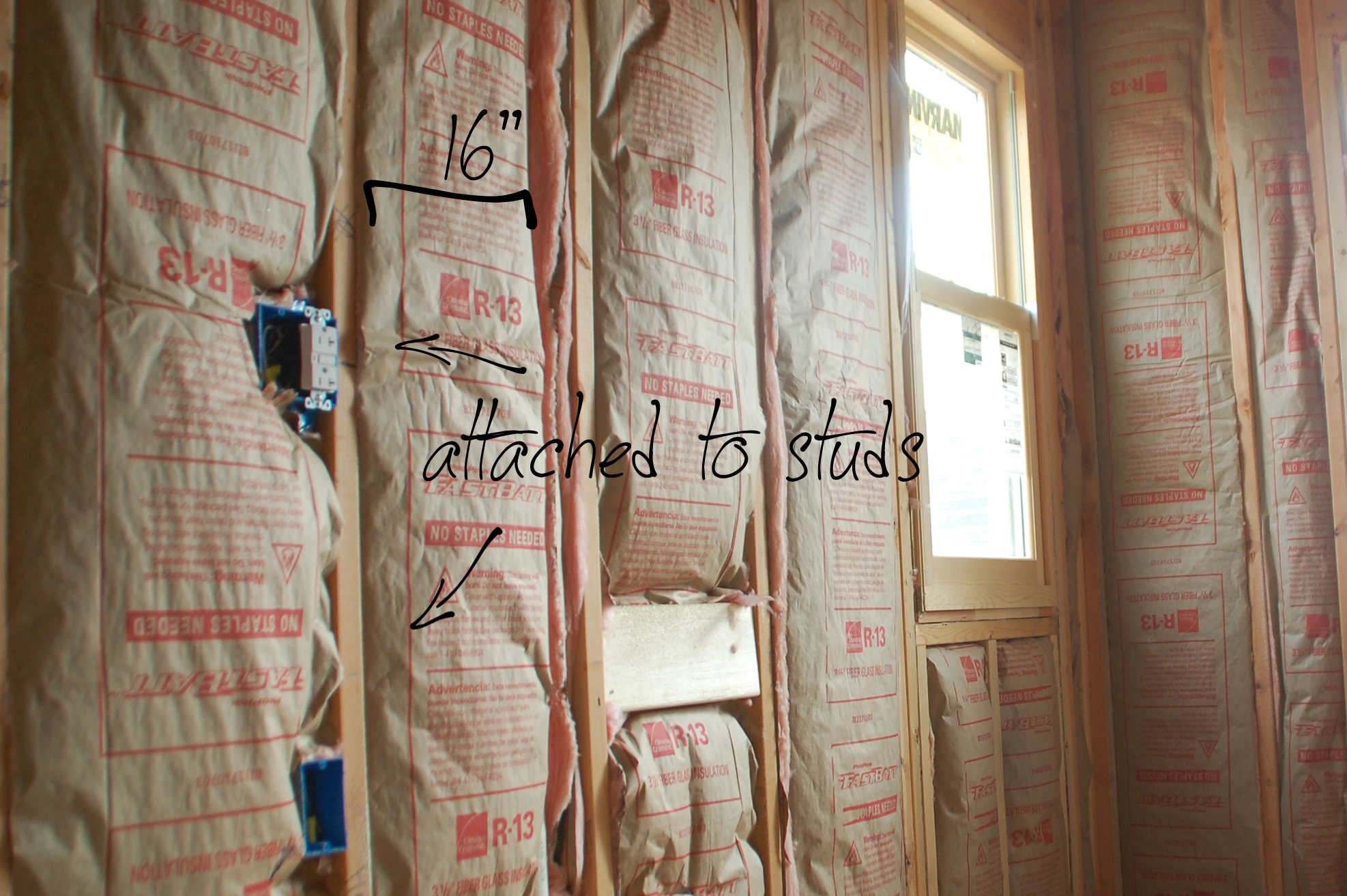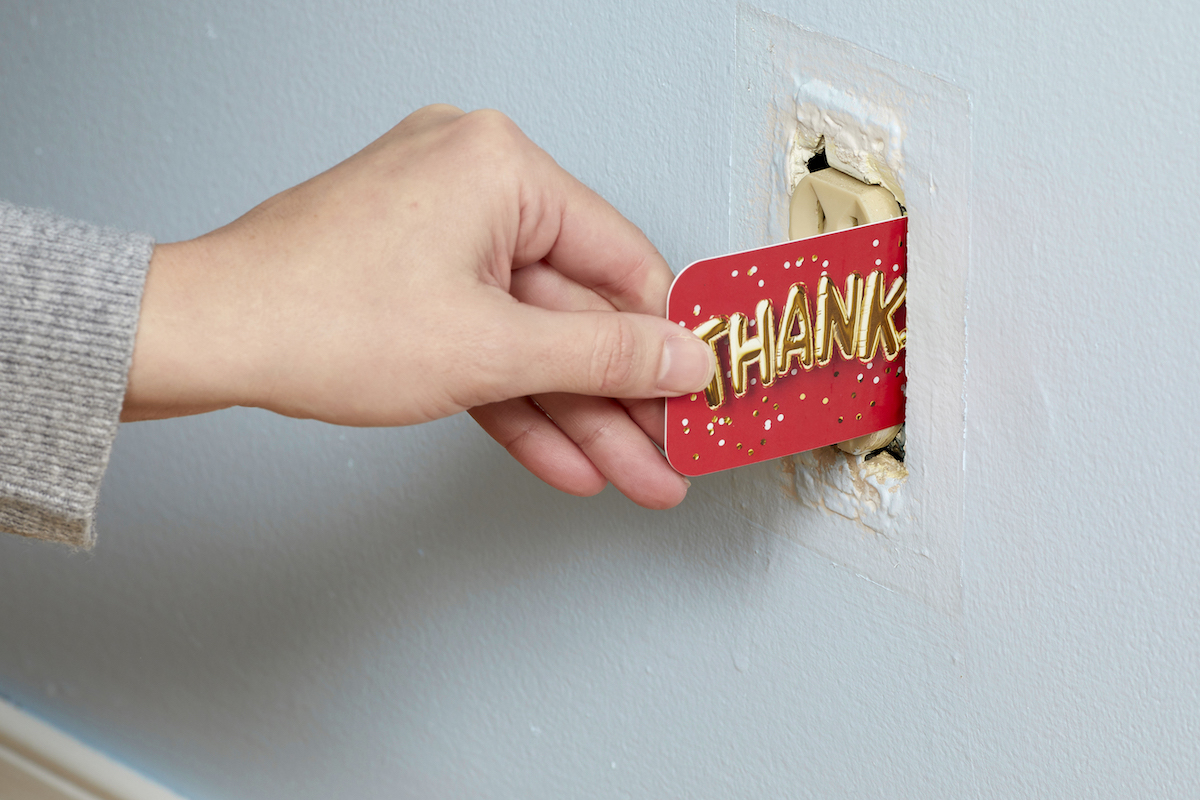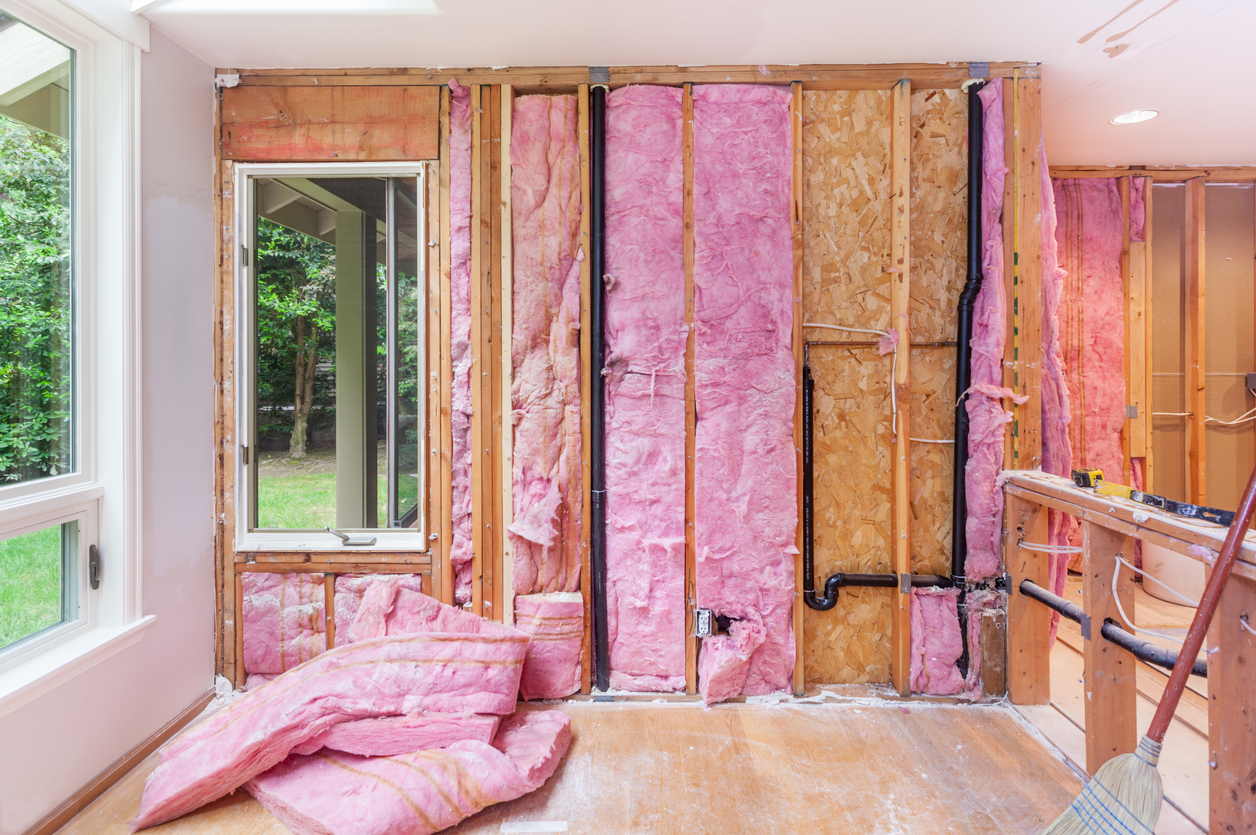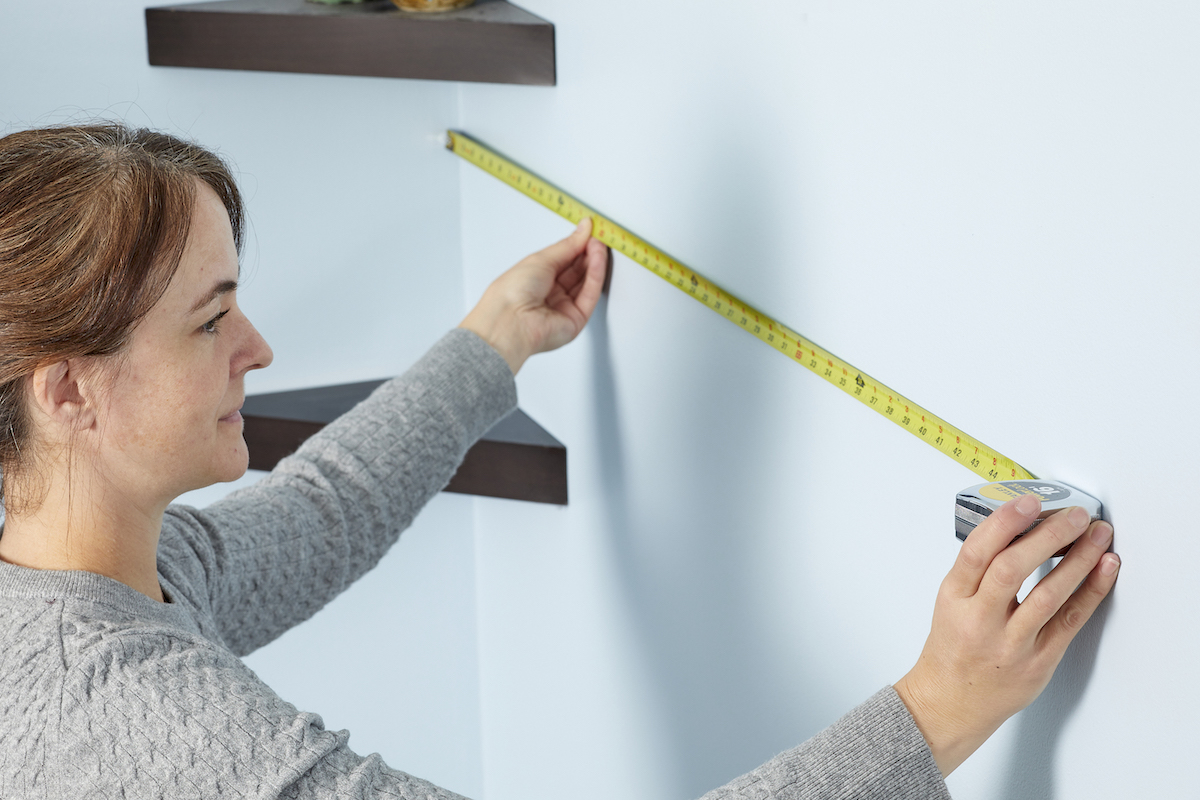We may earn revenue from the products available on this page and participate in affiliate programs. Learn More ›
We’ve all been there, right? “Oh, I just need to find a stud to hang a picture.” And 15 holes later, you’re convinced the wall is held up by pixie dust and a wish, because apparently there’s no wood behind it.
Using a stud finder is one way to locate the framing hidden behind the drywall, but that does you little good if you don’t happen to have one in your arsenal of tools. Stud finders can also be frustrating to use, often failing to detect anything or delivering false positives.
Whether you don’t have a stud finder on hand, don’t know how to use a stud finder, or simply don’t trust the things, there are several effective alternatives for locating a stud. Ahead, learn how to find a wall stud without one of these tools.
What are studs, anyway?

- Wall studs exist to hold up drywall on interior walls and wood sheathing on exterior walls. This means you will always find a stud, header, or footer on the top, bottom, or corners of walls.
- You may be asking, “How far apart are studs?” The distance between studs varies slightly depending on the age of the home. Standard stud spacing is 16 inches on center and is rarely greater than 24 inches, even on center in older houses.
- Most electrical boxes for switches or outlets are attached to a stud on one side.
- There are studs on either side of a window.
- Most trim (crown molding, baseboard, and shoe molding) is nailed on the stud.
- The actual lumber dimensions of 2×4 studs are 1½ inches by 3½ inches.
- Studs are made from one of two materials: metal or wood. Wood studs are found in the framing of most residential homes. Metal studs, in contrast, are used mainly in the construction of commercial and industrial buildings. However, metal studs are becoming more prevalent in homes.
Keeping these points in mind, read on to learn how to find studs using several different strategies.

1. Look at the trim for where it has been nailed to a stud.

When baseboard is installed it’s attached to the studs, so look to see if you can spot where it might have been nailed. These holes—dimples—are generally filled with caulk and painted, but you may be able to spot one to identify the whereabouts of a stud. If you find one, measure in 16-inch increments to locate studs to each side of it.
2. Locate the electrical switches and outlets.

If baseboards don’t offer any clues to the stud’s whereabouts, look for light switches or outlets. At least one side of an electrical box must be mounted to a stud. To determine which side of the box the stud is on, use the “knock test” by rapping on either side of the switch or outlet. The side that returns a solid sound, versus a hollow sound, is the stud side. Next, measure about ¾ inch away from the outlet on the stud side and use that as a starting point to determine the 16-inch intervals of stud spacing.
Pro Tip

3. Measure 16 inches from the corner.

With studs generally 16 inches on center, you can also do calculations by measuring from a corner of the room. Now, all rooms aren’t built in numbers divisible by 16, so you are likely to have a stud that is less than 16 inches from one corner.
Try the knock test near the corner to see if you can determine where the shorter stud spacing might have been added. A hollow sound when you knock indicates that there’s nothing behind the drywall, whereas a more solid sound would suggest that there’s framework there to screw into.
For the most part, this only works if you’re measuring a corner of the exterior of the house. But it’s worth a shot before you go crazy with the test holes, wondering how far apart the studs are in your walls.
4. Use a magnet to locate metal fasteners.

One of the easiest ways to detect a stud is to use a magnet. While the magnet won’t help detecting the wood stud itself, it will help you locate the metal screws used to attach the drywall to the studs.
You can’t just use any ordinary magnet off the fridge, though. Since the screw heads will likely be covered by spackle, you’ll need a strong neodymium magnet, which is the strongest commercially available magnet you can buy.
Move the magnet slowly around the surface of the wall until you feel it pull to one of the screws. If you use the right magnet, it should be strong enough to stick to the surface of the wall at the location of the screw head, making it easy to mark the stud’s location with a pencil.
5. Refer to photos taken during previous renovations.

If you had your home built, you may have taken photos of the house at different stages of its construction, including when it consisted of bare framing with no drywall. If that’s the case, you can use these photos to give you at least a general idea of where studs are located.
Using the pictures, note where the studs are in relation to features that are currently visible in the room–corners, doorways, electrical outlets, and light switches. Going forward, it’s always a good idea to take plenty of pictures anytime your home is undergoing a renovation that involves exposing the framing.
If all else fails, use a stud finder.

There’s no shame in keeping a small stud detector in your tool box, and you’re bound to find more uses for it than just to hang one heavy frame. Floating shelves, bathroom mirrors, and flat-screen TVs can all benefit from the secure hold of a stud.
Final Thoughts

By understanding the anatomy of a wall, you can use one of the above techniques to locate a stud, eliminating the need to buy yet another tool. These techniques can even be a helpful backup for those who do own a stud finder, allowing one to check the accuracy of the stud finder’s readings.
Whichever strategy you use, proceed with caution when drilling holes in your walls. Interior walls contain wiring, plumbing lines, and gas pipes that can cause personal injury or damage to your home if you happen to hit them with a drill bit. As a rule of thumb, you should be reasonably confident of a stud’s location before proceeding with the drill.
FAQs
Yes. There are many free and paid smartphone apps that function as stud finders. These apps use the phone’s internal magnetometer to detect the strength of the magnetic field. While these apps won’t detect the stud itself, they can detect the screws holding the drywall to the stud.
Most wall studs are spaced 16 inches apart on center; however, they can also be spaced at 24 inches. That said, spacing isn’t always exact. Studs can bow and twist up to 1 inch in either direction as a home settles.
Drywall is attached flush to the studs, so the stud’s depth depends on the thickness of the drywall. The most common drywall for interior walls is ½ inch thick. You may also encounter thicker ⅝ inch drywall, which is sometimes used for ceilings or with rooms that require soundproofing.

